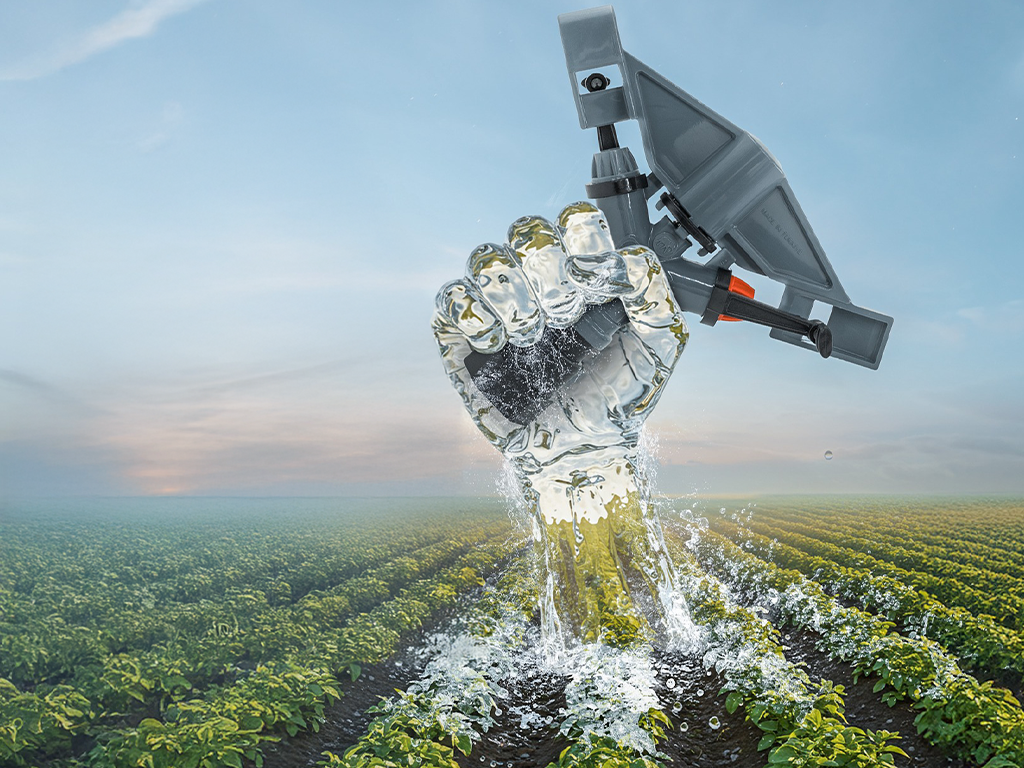
Sprinkler
In modern agriculture, efficient water management is crucial for sustainability, productivity, and profitability. Among the many tools developed to meet these demands, sprinkler systems have emerged as one of the most effective irrigation methods for both small-scale and large-scale farming. By distributing water in a rain-like pattern, sprinkler ensure uniform coverage across wide areas.
But what exactly is a sprinkler, and why has it become a core part of smart irrigation systems?
What Is a Sprinkler?
A sprinkler (also known as a sprinkler head) is an irrigation component that disperses water under pressure in a controlled spray pattern, mimicking rainfall. It is connected to a water supply line and typically operates via a rotating or fixed spray mechanism. Sprinkler are designed to cover specific surface areas with even water distribution.
This method helps deliver moisture directly to the plant leaves and surrounding soil surface, creating optimal growing conditions while conserving water.
Key Benefits of Sprinkler Systems
Uniform Water Distribution
Sprinkler systems provide even coverage across the field, ensuring that no plant is over- or under-watered.
Time and Labor Efficiency
Most sprinklers are compatible with automated irrigation timers, allowing scheduled watering without manual intervention.
Ideal for Large Areas
Whether you’re irrigating agricultural fields, lawns, golf courses, or sports fields, sprinks are highly efficient and scalable.
Erosion Prevention
Controlled water output helps reduce runoff and soil erosion, maintaining the integrity of the land.
Where Are Sprinklers Used?
- Agricultural fields: For crops like wheat, corn, and vegetables
- Orchards and greenhouses
- Lawns and public parks
- Sports facilities and golf courses
- Hotel gardens and residential landscaping
Thanks to their versatility, sprinklers are used in nearly every sector where irrigation is required.
Sprinkler vs Drip Irrigation: What’s the Difference?
| Feature | Sprinkler Irrigation | Drip Irrigation |
|---|---|---|
| Water delivery method | Overhead spray (rain-like) | Directly to plant root zone |
| Coverage area | Broad surface coverage | Point-to-point localized watering |
| Water efficiency | Moderate | High |
| Energy consumption | Medium | Low |
| Suitable for | Grains, lawns, large open areas | Row crops, greenhouses, flower beds |
While both systems are efficient, sprinklers are best suited for wide surface areas where uniformity is a priority.
Factors to Consider When Choosing a Sprinkler
To ensure optimal performance, selecting the right sprink model involves:
- Water pressure compatibility
- Spray radius and angle (e.g., 90°, 180°, or 360°)
- Material durability (UV-resistant plastic is preferred)
- Maintenance and clog resistance
- Integration with filters to prevent blockages
Combining sprinklers with plastic filters also increases system longevity by preventing sediment from entering the spray mechanism.
STF’s Sprinkler Solutions
STF offers a full range of high-performance sprinkler models, engineered for reliability and efficiency in diverse agricultural conditions. Models such as S17 and S10-K are designed to deliver precise water coverage while withstanding outdoor elements.
Key features include:
- High-quality, UV-resistant plastic materials
- Adjustable spray patterns and flow rates
- Easy integration with drip and mainline irrigation systems
- Compatibility with STF plastic filters for cleaner operation
STF sprinklers are trusted by farmers, greenhouse operators, landscapers, and municipal maintenance teams throughout Turkey and beyond.
Why Sprinkler Matters in Smart Agriculture
In the face of climate change and increasing water scarcity, smart irrigation systems have become essential. Sprinkler, when correctly installed and maintained, help conserve water, reduce operational costs, and enhance crop health.
Their ability to cover large areas uniformly, automate irrigation cycles, and integrate with fertigation or filtration systems makes them a pillar of modern irrigation infrastructure.

